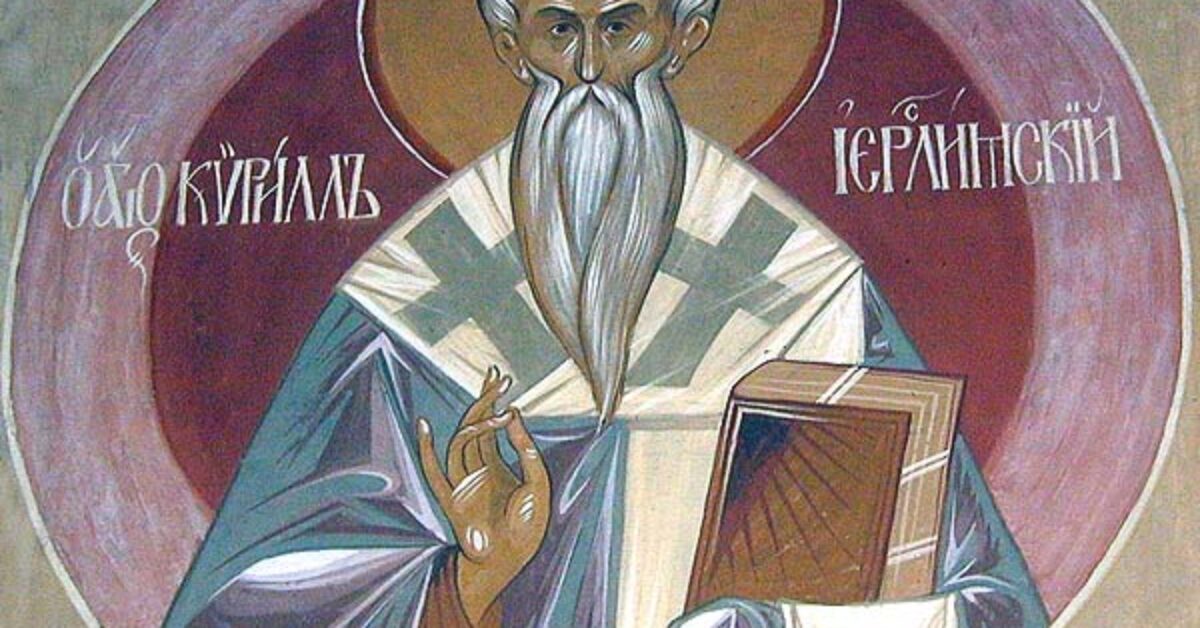Cyril of Jerusalem: On Baptism
Cyril of Jerusalem (ca. 315-ca. 387)
Students of early church liturgy and sacraments appreciate the catechetical lectures (sermons) of Cyril for the wealth of information he provides on the shape of the catechumenate in 4th century Jerusalem and the Church of the Holy Sepulchre built by Emperor Constantine. Preached to “the Enlightened,” those who had been “enrolled” to be baptized at the upcoming Easter Vigil, the sermons are instruction on the baptismal creed.
Lecture Three, On Baptism, begins and ends with the metaphor of marriage to describe baptism. In this excerpt, Cyril uses language of the “dragon” from Job to describe how Christ “bound the strong one in the waters” to accomplished salvation, which is given in baptism. In baptism we too are given the power “to wrestle with the adversaries.” Perhaps Luther was influenced by this sermon of Cyril, for he also describes the baptismal life as a daily struggle against sin.
Lecture Three, On Baptism (Romans 6:3-4)
- Jesus sanctified Baptism by being Himself baptized. If the Son of God was baptized, what godly man is he that despiseth Baptism? But He was baptized not that He might receive remission of sins, for He was sinless; but being sinless, He was baptized, that He might give to them that are baptized a divine and excellent grace. For since the children are partakers of flesh and blood, He also Himself likewise partook of the same613, that having been 17made partakers of His presence in the flesh we might be made partakers also of His Divine grace: thus Jesus was baptized, that thereby we again by our participation might receive both salvation and honour. According to Job, there was in the waters the dragon that draweth up Jordan into his mouth614. Since, therefore, it was necessary to break the heads of the dragon in pieces615, He went down and bound the strong one in the waters, that we might receive power to tread upon serpents and scorpions616. The beast was great and terrible. No fishing-vessel was able to carry one scale of his tail617: destruction ran before him618, ravaging all that met him. The Life encountered him, that the mouth of Death might henceforth be stopped, and all we that are saved might say, O death, where is thy sting? O grave, where is thy victory619? The sting of death is drawn by Baptism.
- For thou goest down into the water, bearing thy sins, but the invocation of grace620, having sealed thy soul, suffereth thee not afterwards to be swallowed up by the terrible dragon. Having gone down dead in sins, thou comest up quickened in righteousness. For if thou hast been united with the likeness of the Saviour’s death621, thou shalt also be deemed worthy of His Resurrection. For as Jesus took upon Him the sins of the world, and died, that by putting sin to death He might rise again in righteousness; so thou by going down into the water, and being in a manner buried in the waters, as He was in the rock, art raised again walking in newness of life622.
- Moreover, when thou hast been deemed worthy of the grace, He then giveth thee strength to wrestle against the adverse powers. For as after His Baptism He was tempted forty days (not that He was unable to gain the victory before, but because He wished to do all things in due order and succession), so thou likewise, though not daring before thy baptism to wrestle with the adversaries, yet after thou hast received the grace and art henceforth confident in the armour of righteousness623, must then do battle, and preach the Gospel, if thou wilt.
+++++++
All 23 of Cyril’s catechetical lectures are includes in the series Nicene and Post-Nicene Fathers, edited by Philip Schaff (1819-1893). Since these works are in the public domain, the entire series is available online.
Here is the link to the full lecture:
https://ccel.org/ccel/schaff/npnf207/npnf207.ii.vii.html
Image: Saint Cyril of Jerusalem, fresco at a Greek Orthodox church; 14th century
https://commons.wikimedia.org/wiki/File:Saint_Cyril_of_Jerusalem.jpg
